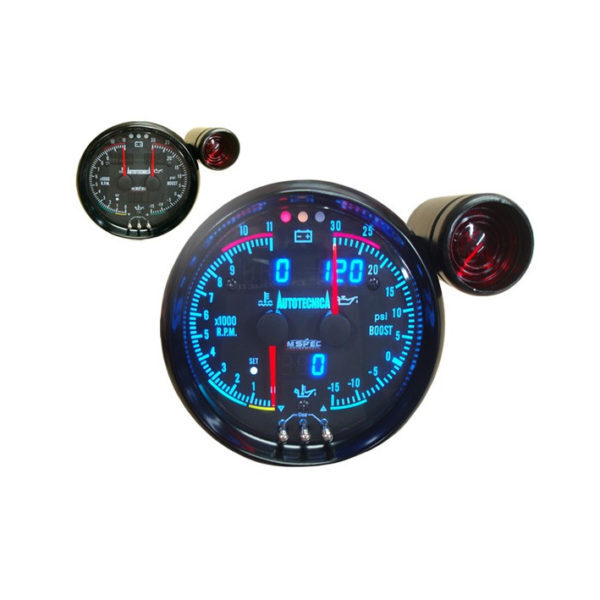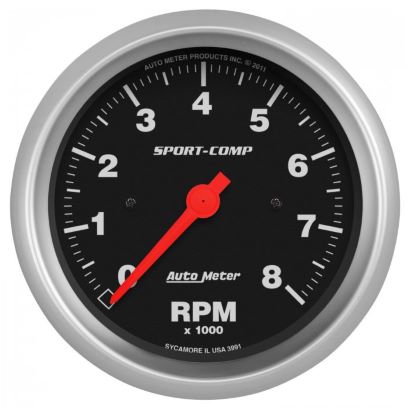The Importance of a Tachometer in Checking Engine Speed and Performance in Automotive Applications
In the realm of vehicle engineering, the tachometer stands as an essential instrument in the driver's toolbox, supplying a direct home window into the inner operations of a car's engine. Past its feature as a simple gauge of revolutions per min (RPM), the tachometer serves as a crucial device for fanatics and experts alike, providing real-time understandings right into engine performance and wellness.
Significance of Checking Engine RPM
Keeping an eye on engine RPM, or transformations per minute, is an essential element of automotive upkeep and efficiency examination. Engine RPM directly correlates with the speed at which the engine's crankshaft revolves, showing how promptly the engine is running - tachometer. By checking RPM, mechanics can evaluate the health and wellness of the engine, identify prospective concerns, and fine-tune performance. An irregular RPM analysis might signify troubles such as engine misfires, faulty spark plugs, or concerns with the fuel delivery system. Constantly high RPM readings might show hostile driving behaviors or the need for a greater gear change to boost gas performance.
Moreover, keeping an eye on engine RPM is crucial for performance evaluation in racing and high-performance lorries. In summary, keeping track of engine RPM is not only vital for spotting problems but also for maximizing engine performance in various auto applications.

Benefits of Real-Time Information
In automotive applications, real-time data plays an important role in offering immediate insights into the performance and problem of the car. By continually checking different specifications such as engine rate, temperature level, fuel usage, and much more, real-time data supplies countless benefits that add to enhanced efficiency and safety on the road.
Additionally, real-time information facilitates efficiency optimization by giving instant feedback on driving behaviors and engine performance. Drivers can change their actions in real-time based on this info to achieve far better fuel economic climate and lengthen the life-span of their car.

Furthermore, real-time data plays a vital duty in modern automotive diagnostics, allowing technicians to quickly diagnose and address malfunctions. This results in reduced downtime, lower upkeep expenses, and eventually, enhanced total lorry reliability and long life (tachometer). By taking advantage of the power of real-time data, automotive stakeholders can make educated choices that positively influence both the performance and durability of the click over here now lorry
Influence on Equipment Shifts
The tachometer plays an important duty in enhancing equipment shifts by providing real-time engine rate information to the chauffeur. When approaching the redline on the tachometer, it signals the chauffeur to upshift to avoid over-revving the engine and causing possible damages.
In addition, the tachometer help in accomplishing smoother gear transitions, particularly in hand-operated transmissions. By keeping an eye on engine rate, motorists can implement gear shifts at the optimum RPM range, reducing jerking motions and minimizing endure the transmission parts. This precision on duty changes not only improves driving comfort yet likewise adds to fuel efficiency.
Enhancing Gas Efficiency
Given the critical role the tachometer plays in enhancing equipment changes for performance and engine health, it directly adds to taking full advantage of gas performance in vehicle applications. By providing real-time comments on engine speed, the tachometer aids vehicle drivers in keeping one of the most effective RPM range for fuel economic climate. When motorists continually monitor the tachometer and readjust their motoring routines appropriately, they can stay click here for more clear of unnecessary gas usage brought on by over-revving or carrying the engine.
Furthermore, the tachometer aids motorists identify the most fuel-efficient equipment to be in at any kind of provided moment, stopping the engine from functioning harder than essential. In conclusion, the tachometer serves as a beneficial device in boosting fuel efficiency by promoting optimum driving practices and identifying areas for improvement in the automobile's performance.

Making The Most Of Engine Durability
The tachometer's function in keeping an eye on engine rate and efficiency is instrumental in guaranteeing the longevity of automobile engines. By using the tachometer effectively, drivers can maximize engine long life through mindful RPM monitoring. Consistently revving an engine as well high can lead to extreme wear and tear on critical components, such as the pistons, shutoffs, and bearings. With time, this can result in reduced engine performance and possible breakdowns. Checking the tachometer allows drivers to remain within the advised RPM variety for their car, stopping unneeded stress on the engine and extending its lifespan.

Verdict
In verdict, the tachometer plays an important role in checking engine rate and efficiency in automobile applications. By supplying real-time data on RPM, it permits effective equipment shifts, boosted fuel performance, and made best use of engine durability. This tool is important for keeping optimal engine efficiency and ensuring the general Clicking Here capability of an automobile.